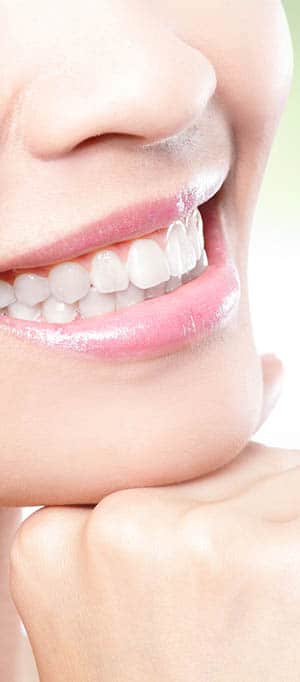CONTACT OUR OFFICE TODAY TO SCHEDULE YOUR VISIT. OUR NUMBER (336) 788-5073
GUM DISEASE IN WINSTON-SALEM
STAGES OF GUM DISEASE
Periodontal disease is a progressive illness, and will become worse over time. The treatment that a patient will receive will depend on what stage of gum disease they are at, and how badly their gums and bone tissue have been damaged. Below are three stages of gum disease, and what to expect at each stage:
GINGIVITIS
The earliest and most treatable stage of gum disease is gingivitis. At this stage, the symptoms are very minor, and can be easily reversed. Generally, patients with gingivitis will notice red and swollen gums, bleeding (especially while brushing) and bad breath. No permanent damage has occurred at this stage.
PERIODONTITIS
Once gum disease progresses to the periodontitis stage, it has become more serious. There may be permanent damage that cannot be reversed. A patient’s gums may start receding, and the risk of bone loss becomes much higher.
ADVANCED PERIODONTITIS
At this stage, the gum disease has caused permanent, irreparable damage. The gums have receded and the bone tissue loss is significant. Teeth are loose, and may have already begun falling out. Your dentist will do their best to save your teeth and gums, but there will be some damage that they can’t fix.

CONTACT LEAL, SPANGLER & JOHNSON
Drs. Leal, Spangler, and Johnson in Winston-Salem, NC provide the highest quality dental care with a personal touch, thoughtfully considering each patient and their needs. We offer comprehensive family and esthetic dentistry and love helping people achieve a healthy smile.
We are accepting new patients.
GUM DISEASE TREATMENT
What needs to be done to treat gum disease depends on the stage of the disease, but most patients will have their gums treated in the gingivitis stage. At this stage, scaling and root planing (also known as a “deep cleaning”) will likely be all that is required to treat the gums. If the gums have receded significantly, a gum graft may also be required.
Scaling and root planing involves a dentist cleaning at and below the gumline, removing plaque, tartar and debris. Special instruments are used to clear away this plaque, tartar and debris, and local anesthesia is used to ensure pain and discomfort is minimal.
If the gums have receded, a dentist may consider a gum grafting procedure. During this procedure, the dentist will take tissue from another area of the mouth and graft it onto the damaged area—helping to restore the gums.
In more extreme situations, the jaw bone may be reshaped through bone surgery to remove bacteria that has formed in craters.
PREVENTION
In order to avoid gum disease entirely, there are certain things that everyone should do. One of the most important factors in avoiding gum disease and improving overall oral health is brushing, flossing and rinsing every day, twice a day. With regular maintenance, it’s much less likely that you will suffer from gum disease.
It’s also extremely important to visit your dentist every six months. During these visits, your dentist will professionally clean your teeth with special tools that will remove plaque, tartar and debris that leads to gum disease. Your dentist will also be able to check your teeth and gums for decay, disease and infection. If they notice that your gums are infected, they can begin treatment immediately, and stop the progression of the disease.
If you do not currently have an appointment scheduled with your dentist for a cleaning and checkup, make sure to do so. If you cannot pay the out-of-pocket costs, consider dental insurance. There are many low-cost plans that offer cleanings and checkups.
COST OF TREATMENT
The actual cost of treatment will depend on a variety of different factors, which include the extent of the damage and which procedures will be necessary to repair the gums. The actual scaling and root planing will often cost around $140 to $210, but can be significantly less with
insurance coverage. If there is more severe damage, or if gum grafting is required to repair the gums, the costs may be considerable higher.





